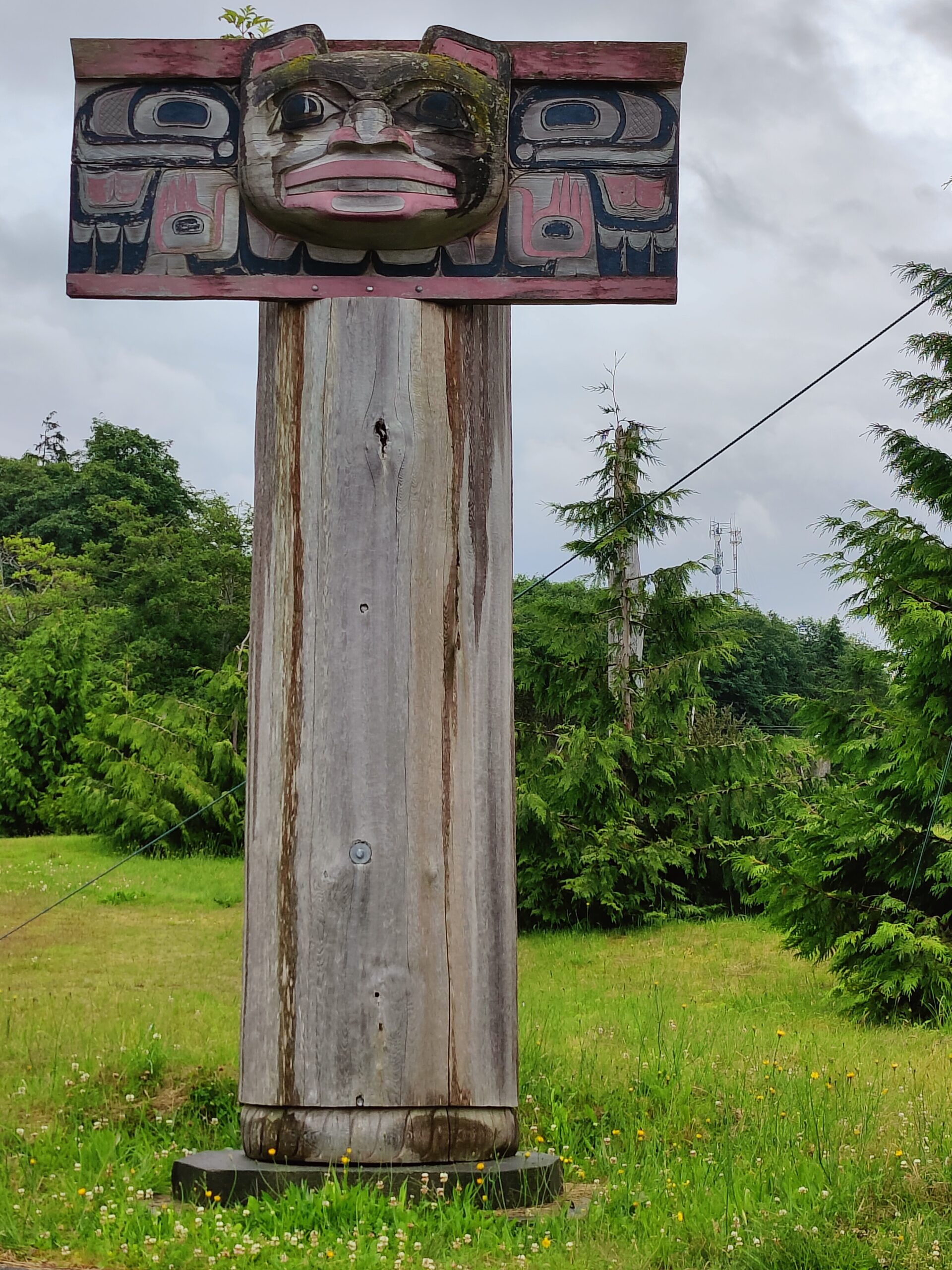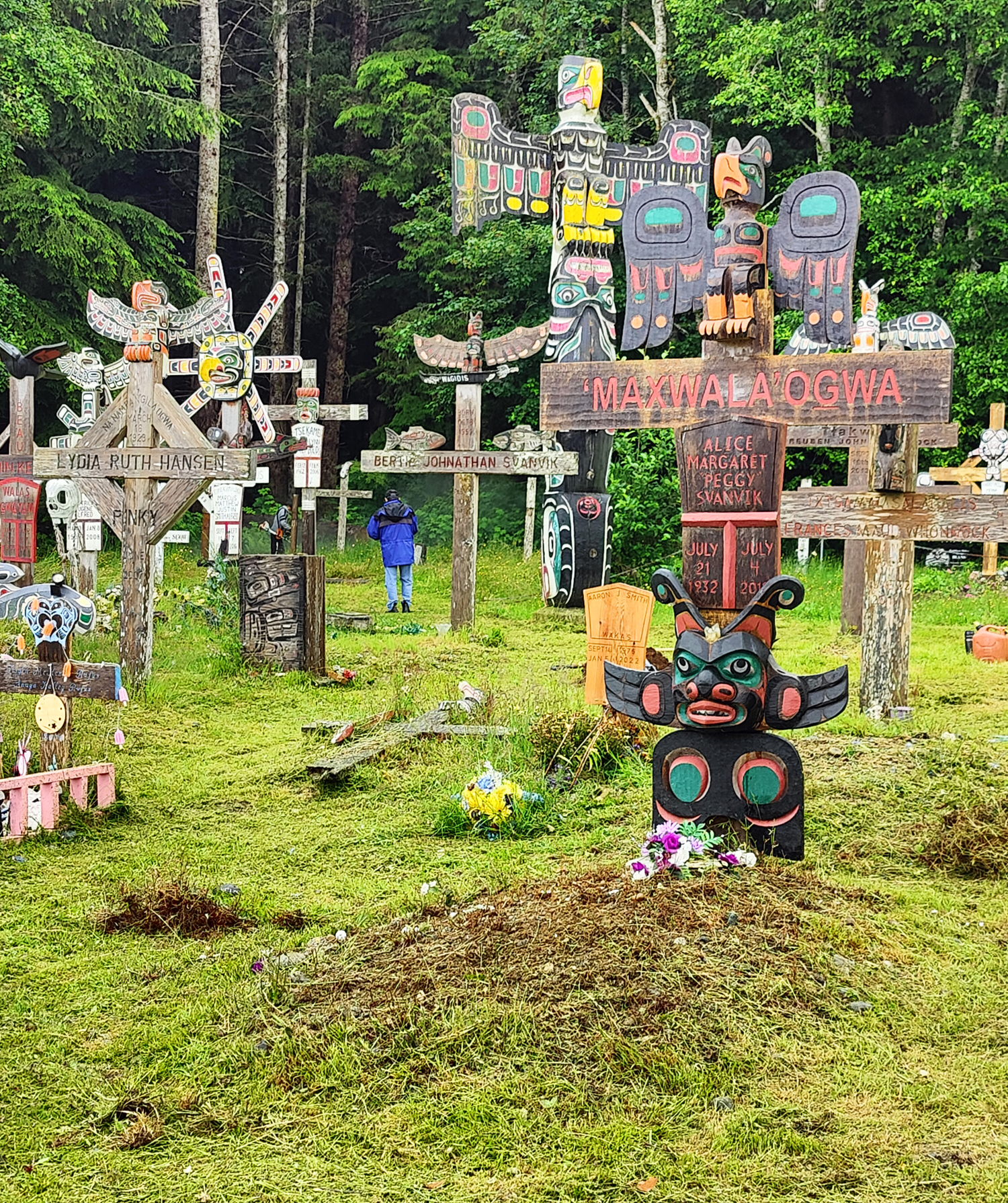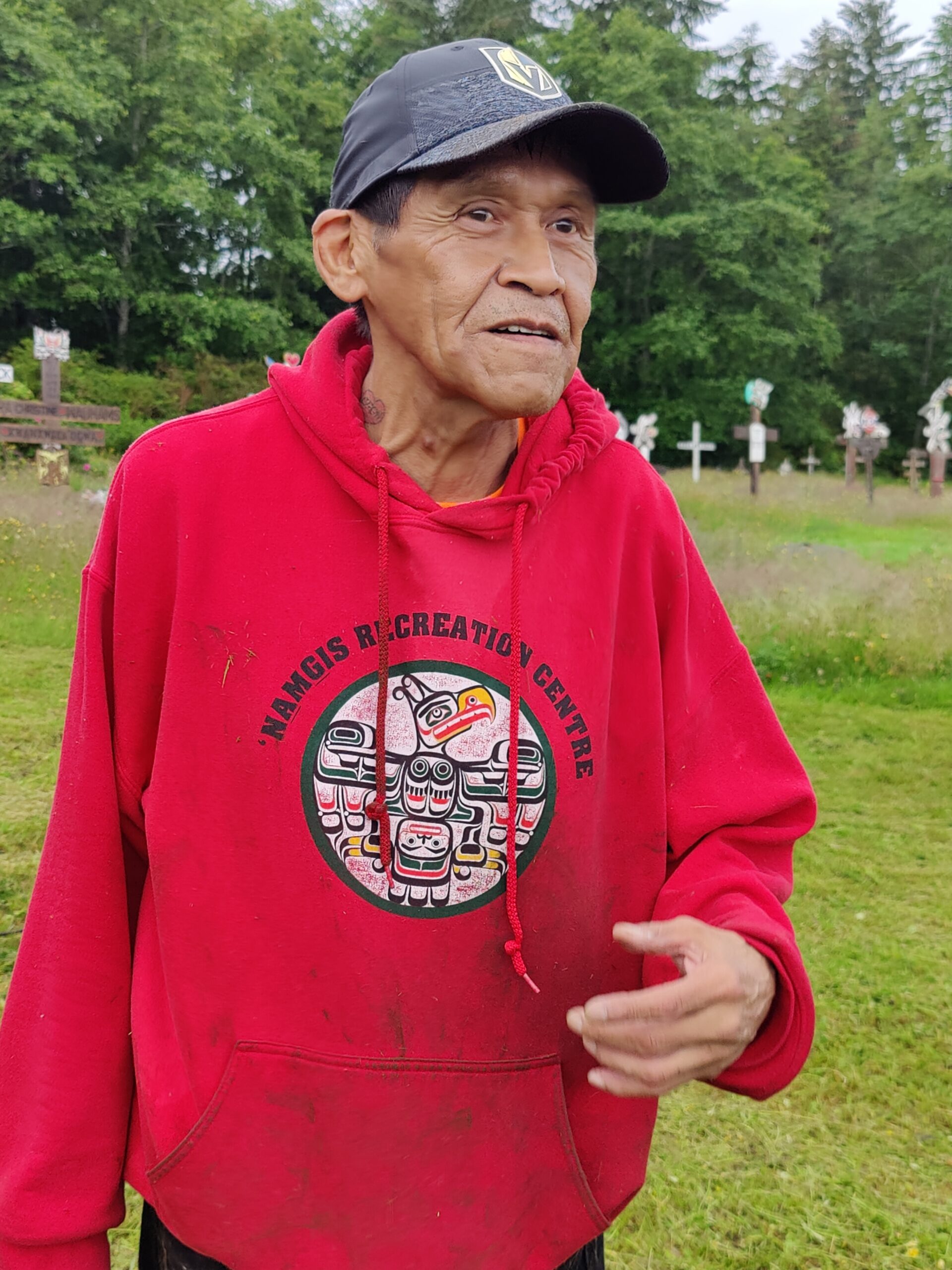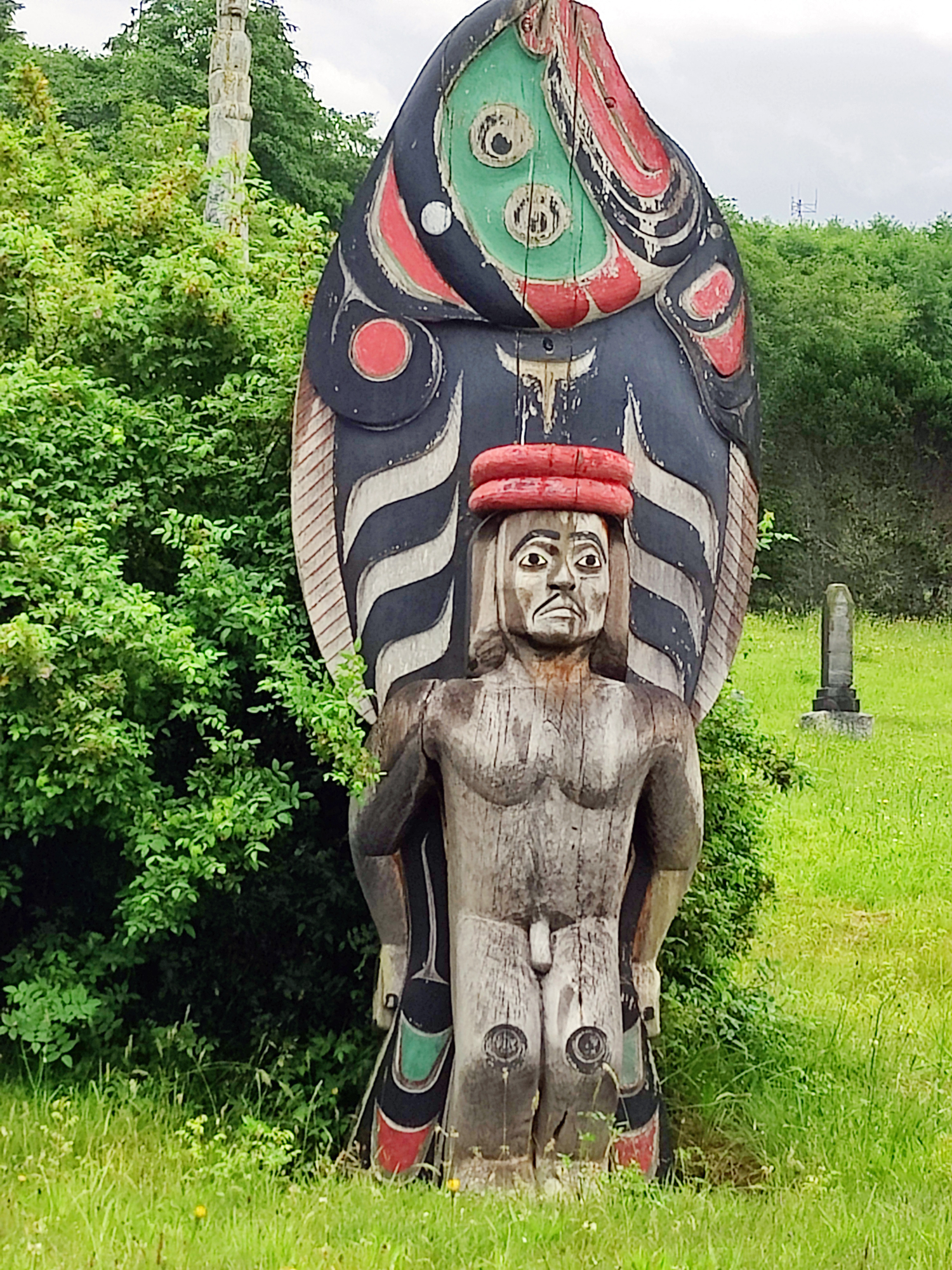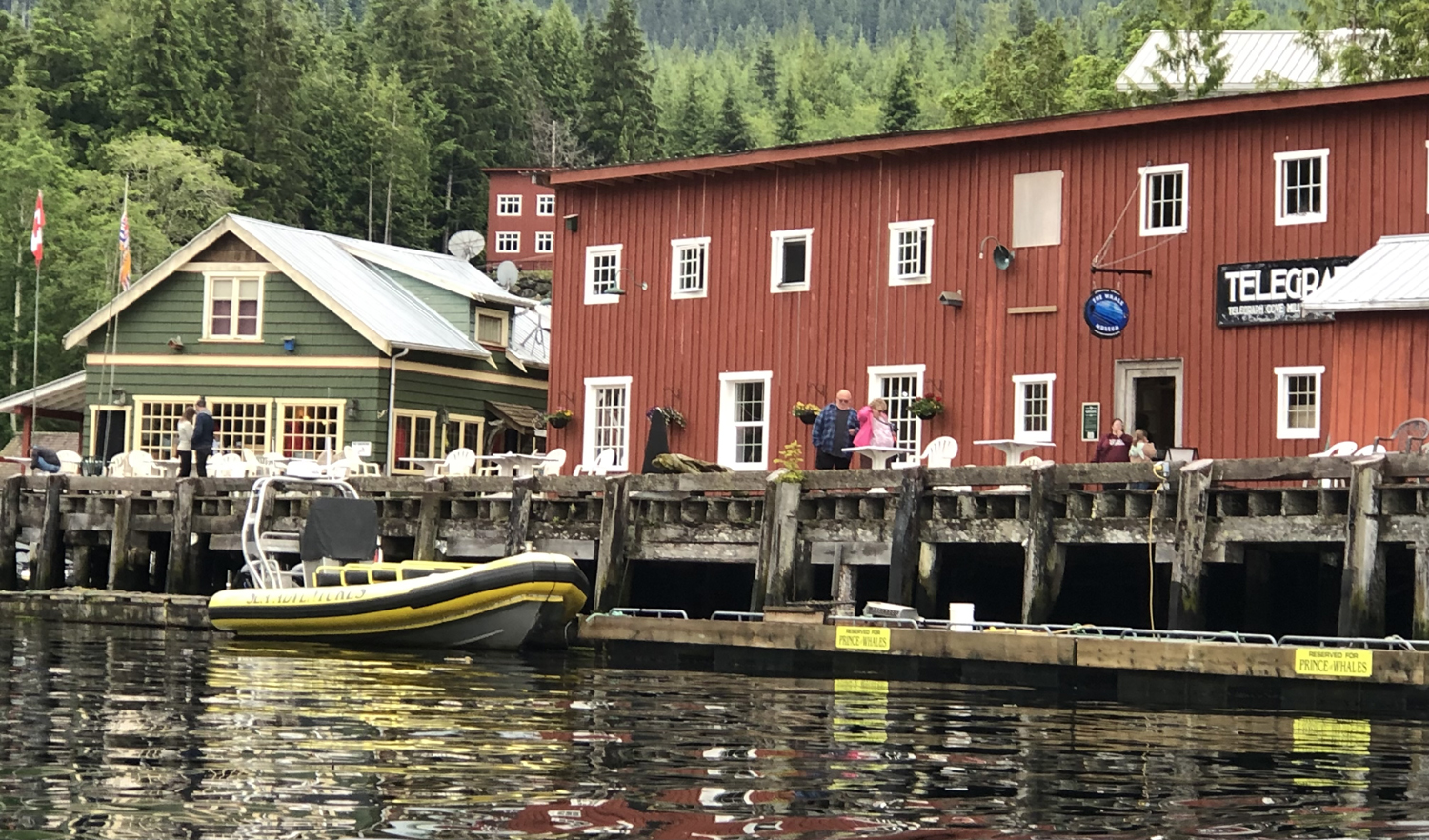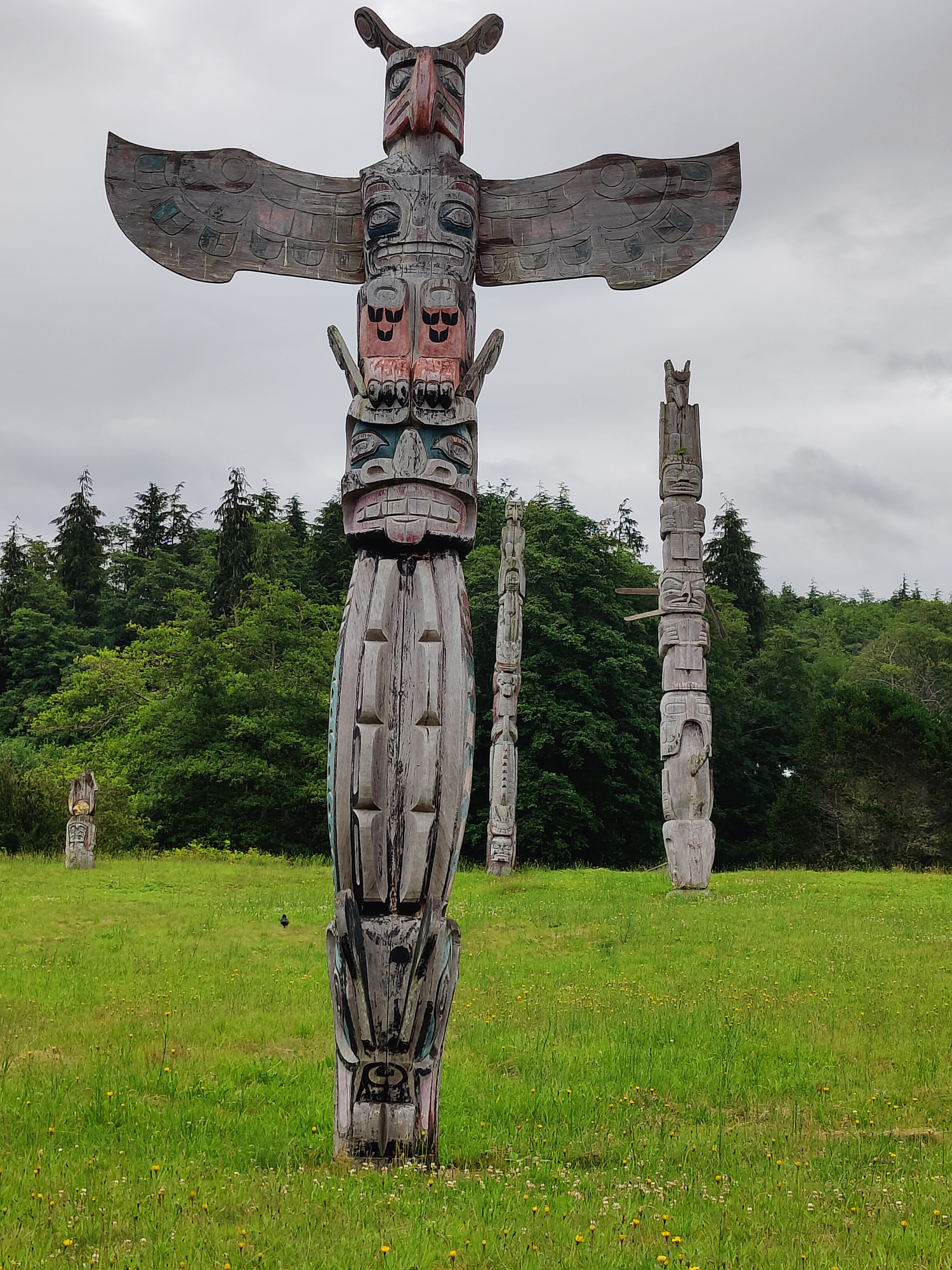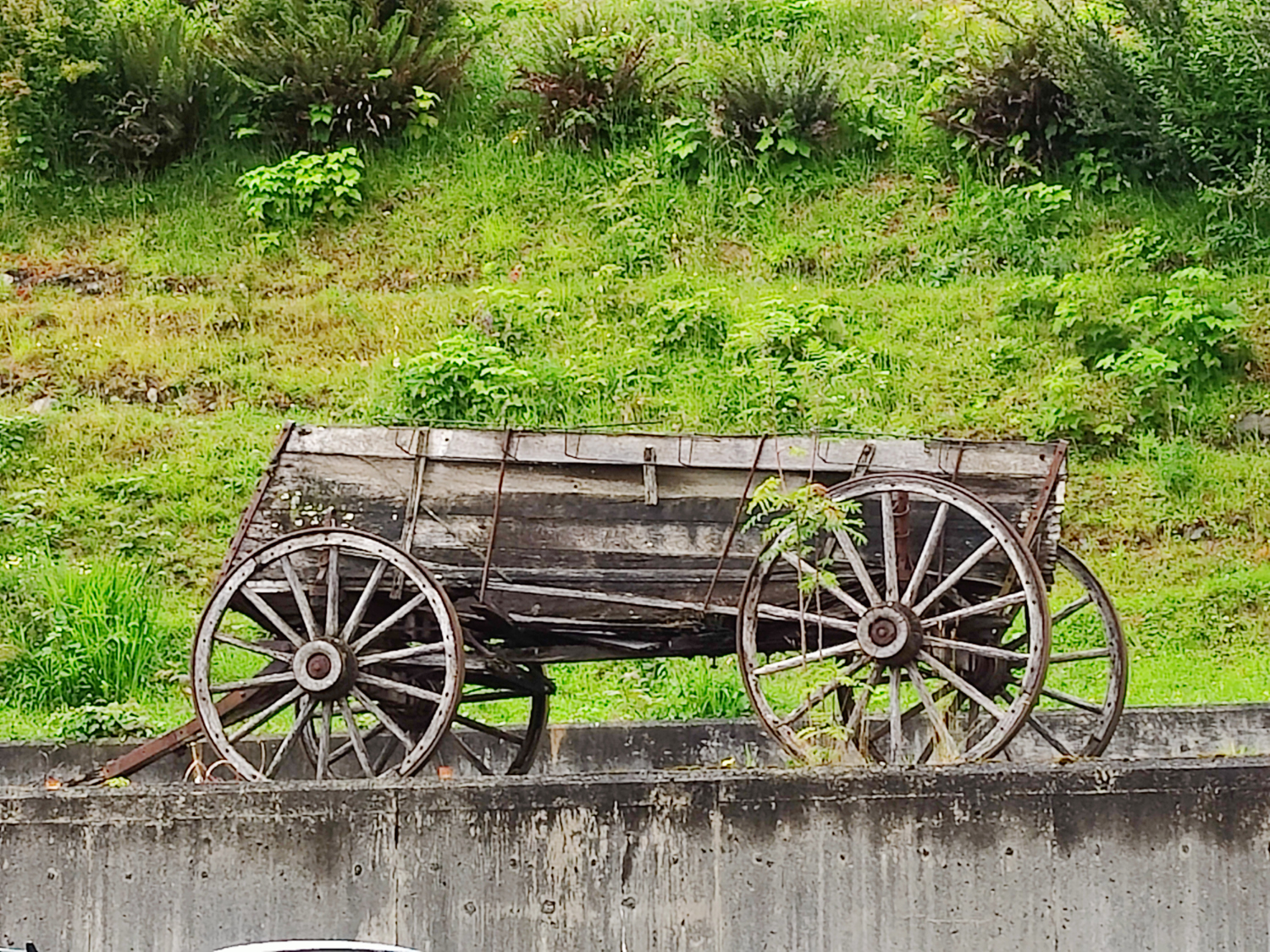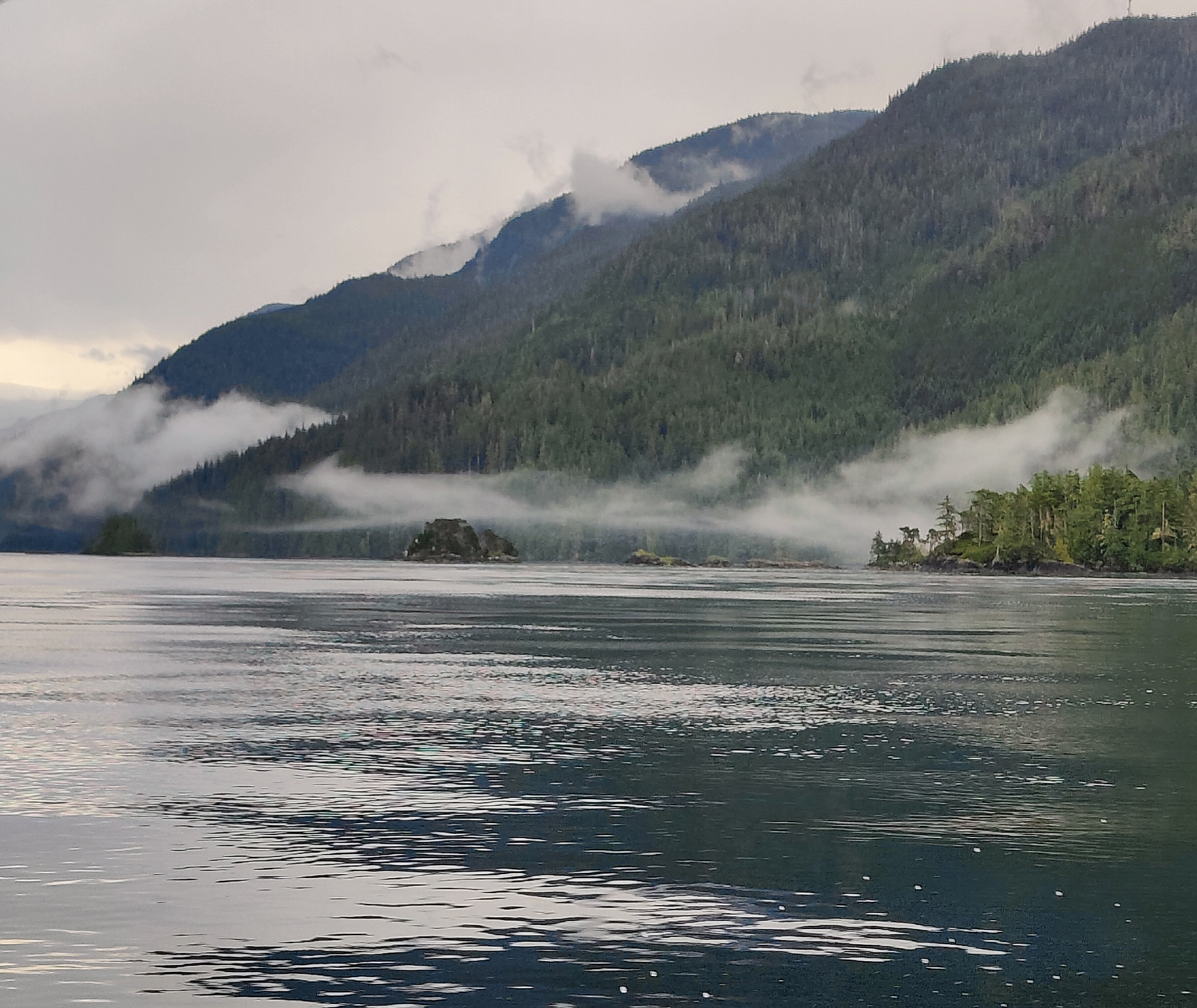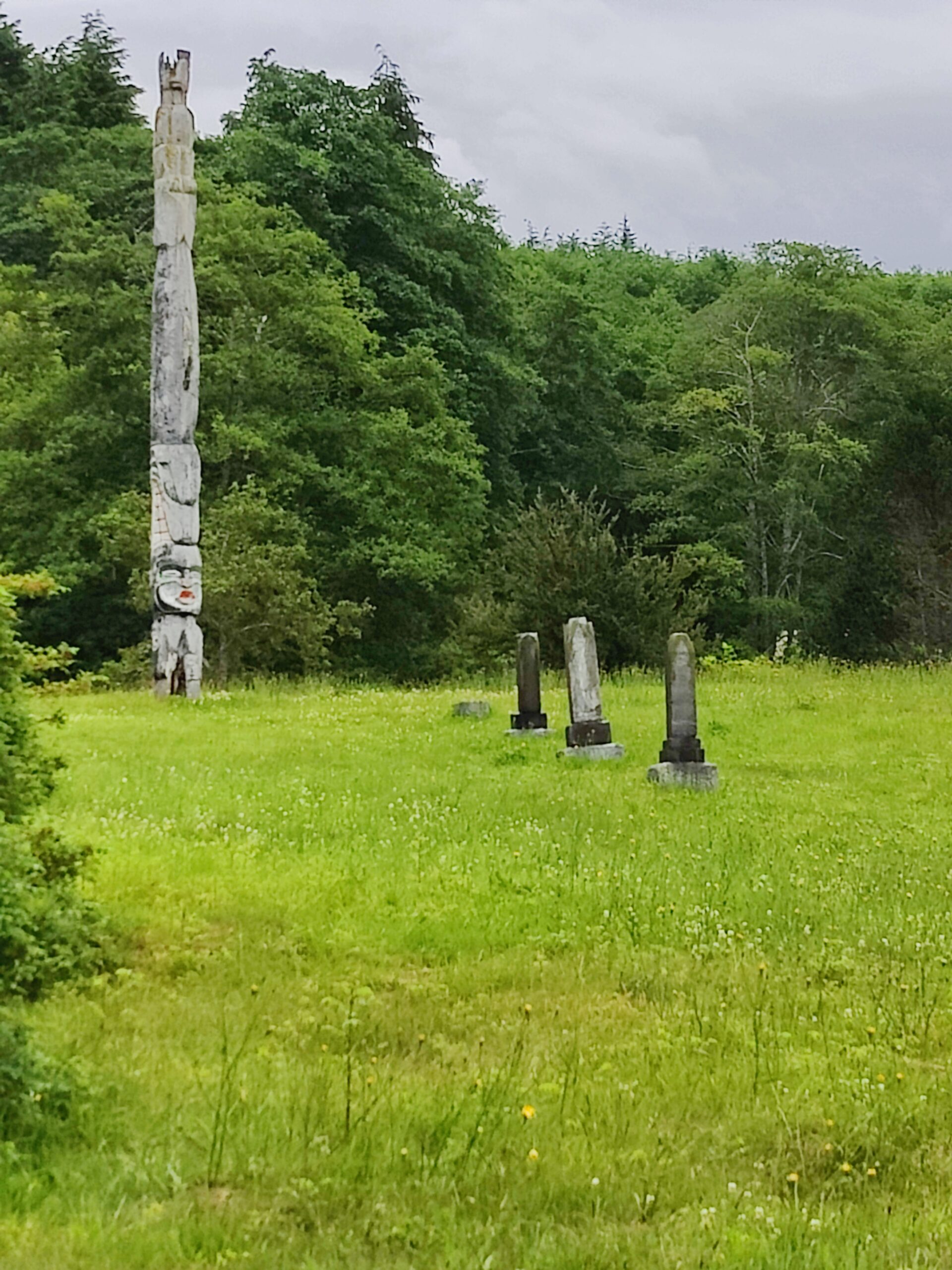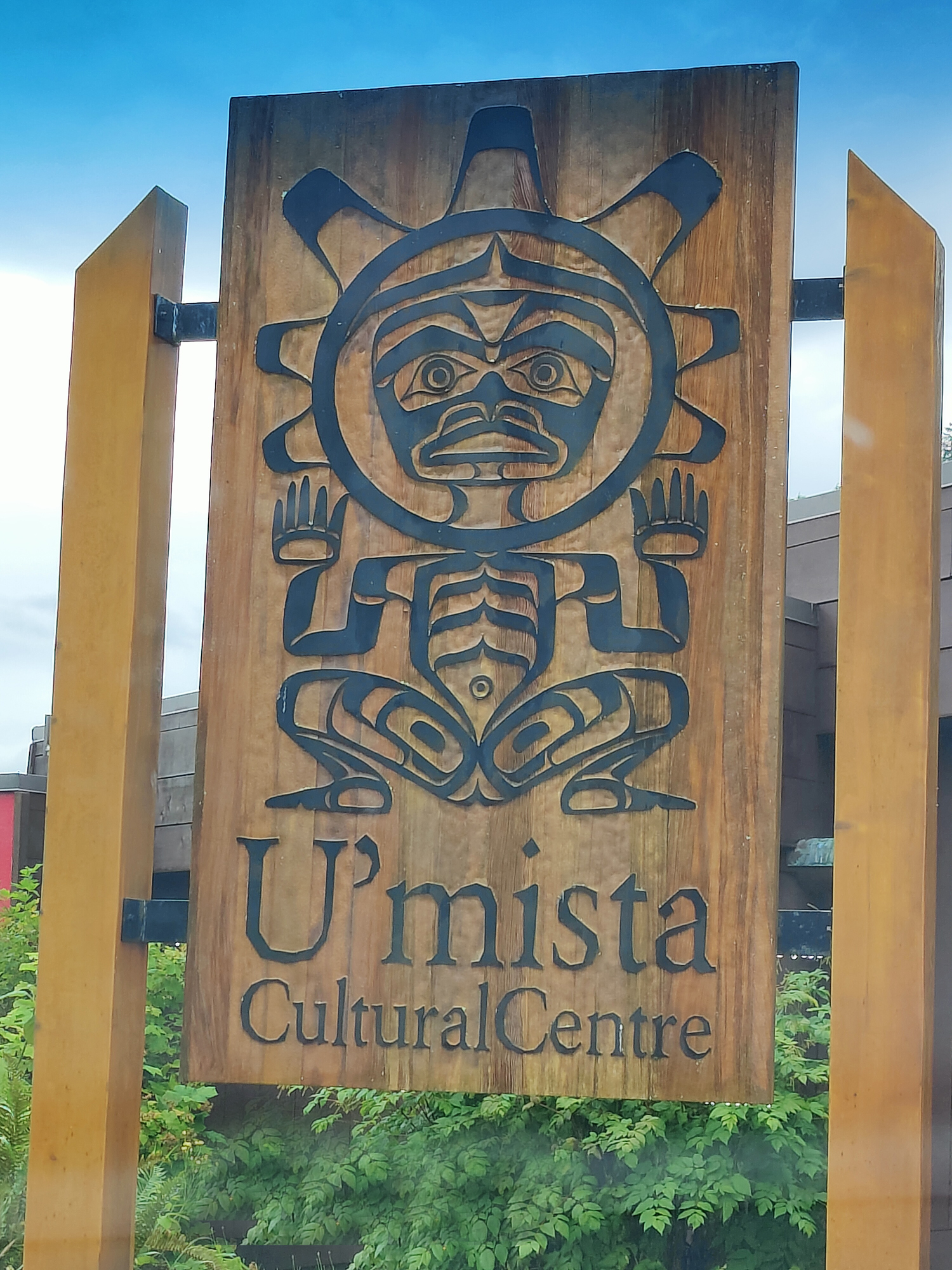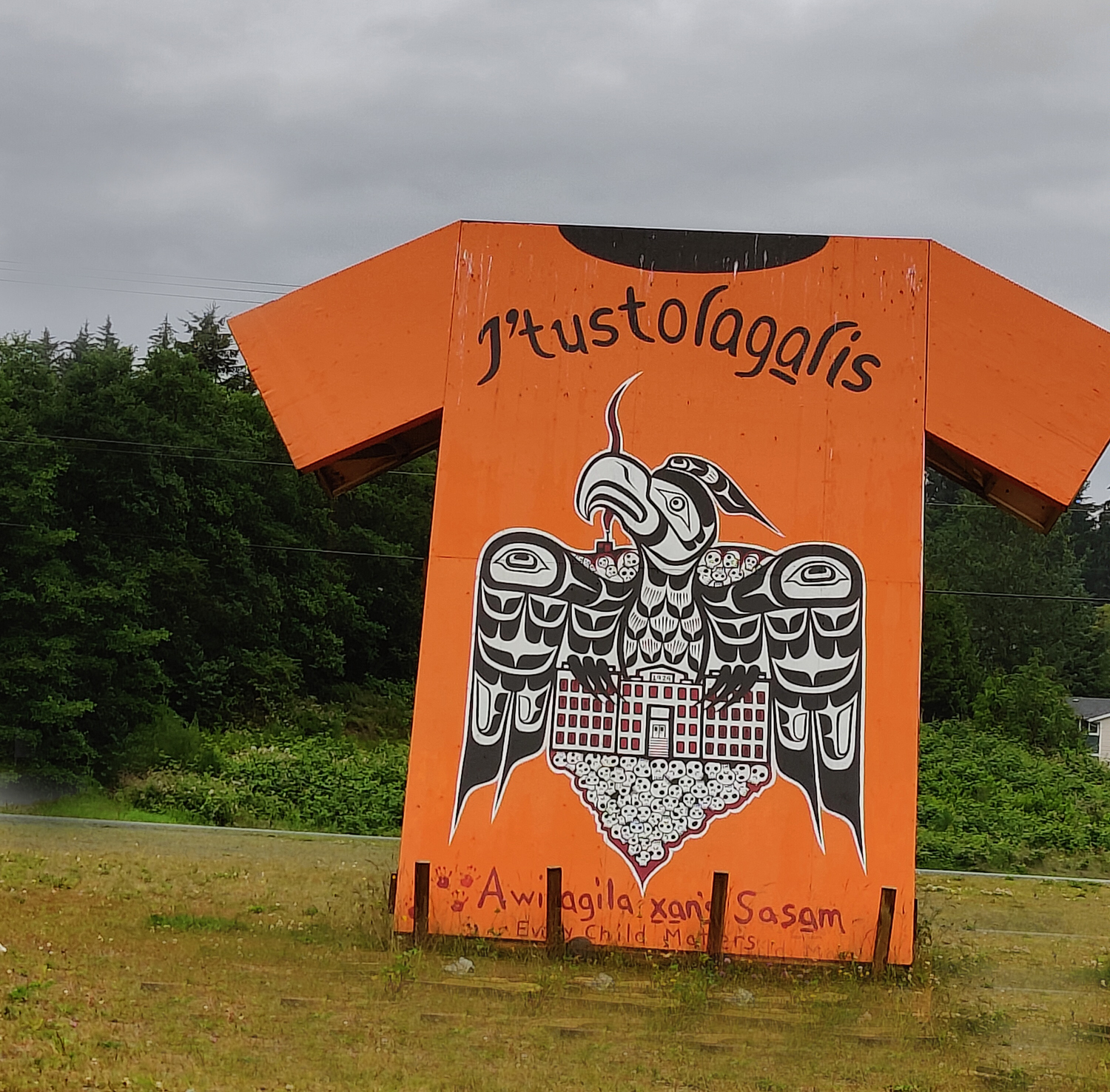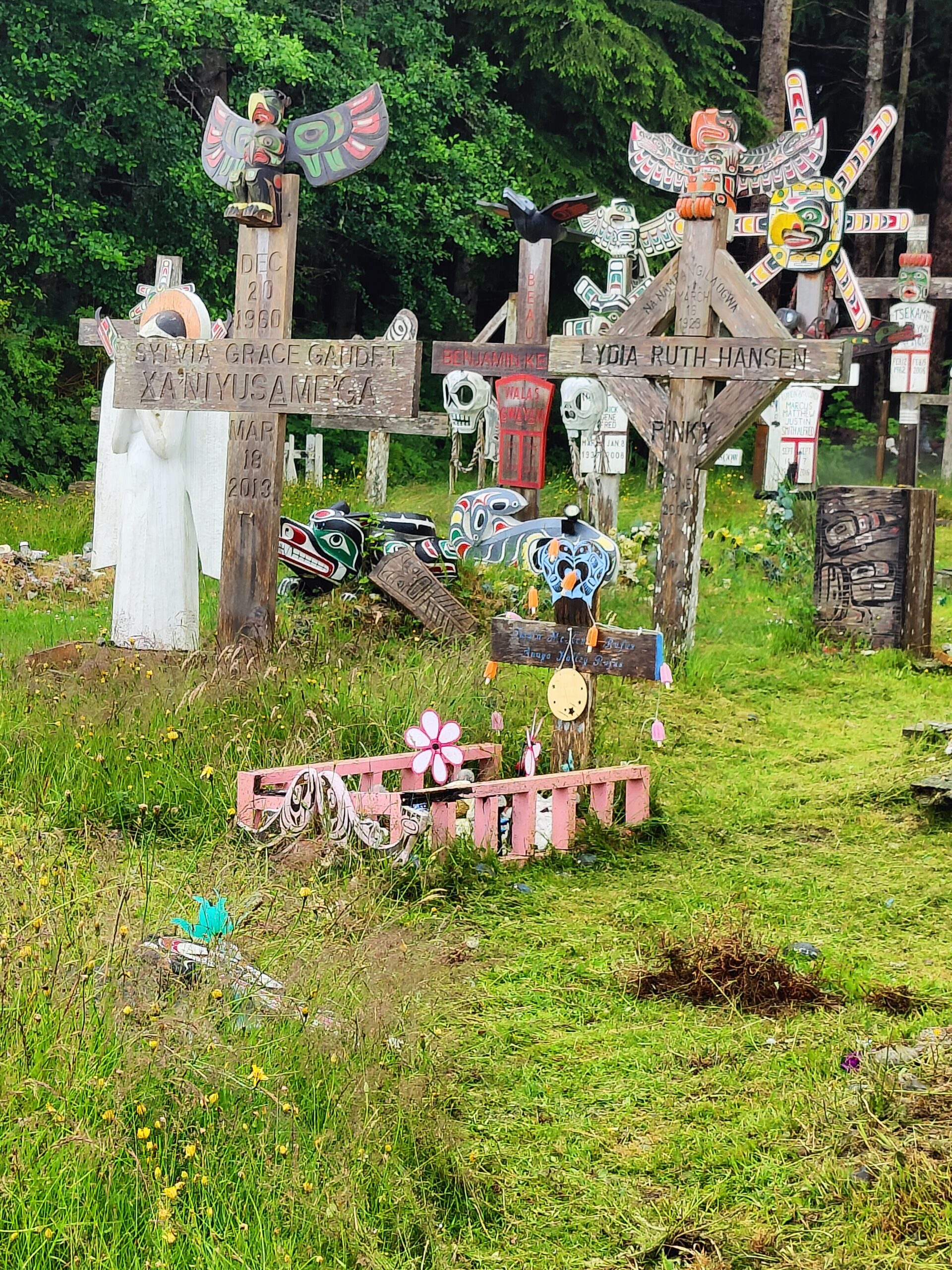text and photos by Mary L. Peachin
Vol. 26, No. 8/9
July/August, 2023, Vol. 10/11
Na̱mǥis First Nations people are the primary residents of Alert Bay. Their history evolves from a story about ʼNamxxiyalegiyu (a halibut-like sea monster). Before the great flood, the Creator sent a message to a ʼNa̱mǥis man in his dreams. He was told to wait by the ocean for ʼNamxxiyalegiyu, a large sea monster. When the flooding began, ʼNamxxiyalegiyu arose from the depths causing tides around the world to drop. The man climbed onto ʼNamxxiyalegiyu who protected him in the depths of the ocean. The Creator gave this man a supernatural power to breathe underwater.
When the waters subsided ʼNamxxiyalegiyu returned the man to his homeland. The man looked around and saw that he was all alone, so he took the name Namukustolis. He came to the beach near the mouth of the ʼNa̱mǥis River. Namukustolis was very lonely, so after a time, he snared some birds and transformed them into people. This is how he began the ʼNa̱mǥis Band (tribe.) The great sea monster, ʼNamxxiyalegiyu, remains the tribe’s crest. The residents of Cormorant Island’s compact area endorse a philosophy of neighborly harmony.
For thousands of years Cormorant Island, or Yalis, was populated by a great nation of seagoing people who called themselves the Kwakwaka’wakw. ‘Namgis, one of their most influential sub-groups lived along the rich valley of the river on Vancouver Island. Modern maps may identify the area as the Nimpkish.
The principal village was built on terraces on the west side of the river mouth. It was here that a famous chief, Cheslakee, confronted and then befriended the captain of a tall-masted ship full of strange-looking men that anchored nearby in 1792. The ship was the Discovery and the captain’s name was Vancouver. His anchorage was in a sheltered cove on a nearby island. Around 1860, that island and its new European settlement would be named after the Navy ships HMS Alert and HMS Cormorant.
Fortunately, Vancouver had a knack for diplomacy. The ‘Namgis were a proud and powerful people thanks to the riches of their river, forest and sea. In the period between first contact with European explorers and the beginning of an European settlement, the area was a profitable hunting ground for traders and exploiters. One good load of otter furs could make a ship owner rich for life. When the otter was hunted almost to complete extinction, other resources included coal, gold, timber, whales, and fish.
In the 1870s, the Nimpkish River salmon runs attracted two entrepreneurs, S.A. Spencer and Wesley Huson. They decided that Cormorant Island, opposite the river mouth, was a good location for a salmon saltery.
A salmon saltery requires a large supply of water. Spencer and Huson followed streams uphill to a boggy tract on the crown of the island. They dammed the flow from the resulting pond piping the water downhill to their packinghouse. There were also plenty of trees for building material.
The high-water levels caused by the dam killed many trees, leaving a forest of dead standing wood. Wildfires raged, leaving only the skeletons of the biggest trees. The roots of the charred carcasses of spruce, hemlock and fir soon rotted out. Only the durable red cedars resisted decay. Their bleached trunks still stand, 150 years after they died, creating an eerie scene that became known as “Gator Gardens.” In 1998, it was renamed Alert Bay Ecological Park.
Alert Bay developed into the largest commercial fishing town on the central coastline. Spencer and Huson were joined by other fish processors and the harbour was crowded with gillnetters, long-liners and trollers. There were canneries here, as well as in many locations within a day’s sailing time of Alert Bay. First Nations families moved in, the women worked in the canneries, their husbands and sons fished. The ‘Namgis now had their own harbour.
Clear-cut logging along every stream destroyed spawning beds and over-fishing hastened the loss of salmon. The awesome runs that once came to the Nimpkish River were mere trickles. The biggest runs of sockeye currently passing through Alert Bay ’s waters are from the tributaries of Vancouver’s Fraser River. The few fish boats still around are mostly high-tech machines using electronics to find their targets.
Today, visitors are attracted to the small village, now virtually a one-street town. There are several hotels, a few restaurants, and the ʼNa̱mǥis primarily live in the hills above the ocean front. Multiple burial grounds are filled with totems and carvings to respect the deceased.
A serendipitous encounter Tracy Lee Whonnock, who was grooming his family plot, enlightened us to his experience, similar to those throughout Canada, of being sent to a resident school. He was angry about not being taught to read or write, and the abuse he suffered. Today, while housing is provided to his Band, there is no water or utilities. Many of the houses are boarded.
A second day we toured the harbour admiring frequent sightings of humpback whale and numerous eagles, sea lions and otters. We departed Alert Bay through the south end of Broughton Strait crossed the mouth of Beaver Cove and lunched at Telegraph Cove.
After lunch we crossed the north end of Johnstone Strait into Weynton Passage passing between Stubbs Island and the Plumper Group of Islands entering into the south end of Queen Charlotte Strait heading south through Blackfish Sound (Orca Lab Location on Hanson Island) traversed some rough water in Blackney Passage into Johnstone Strait where humpback whales were feeding in the tidal rip.
Returning north in Johnstone Strait we circumnavigated Hanson Island then took the shortcut between the Pearse Islands into Pearse Passage where we observed sea otters playing.
The few stop signs in Alert Bay says ‘WA ‘LA. It’s a quick trip.

